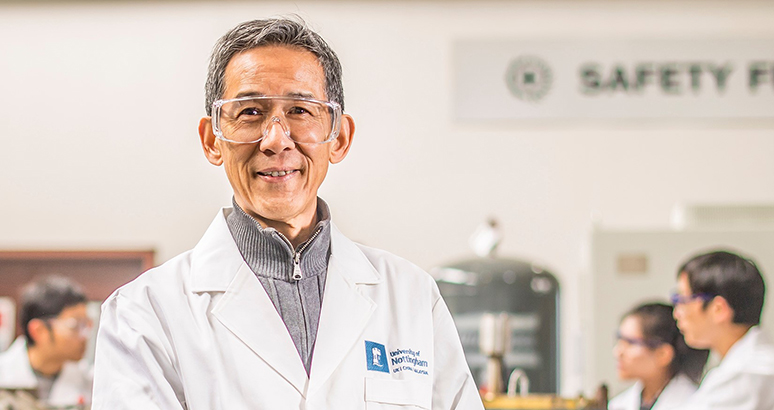
Xiaosu Yi
Developing sustainable materials
Lik Dak Sum Chair Professor in Advanced Materials and Composites
Can you explain your research?
The world is facing a race against time to protect the environment and resources while still relying on fossil resources for much of its plastic and polymer material manufacturing. We are developing sustainable materials and multi-purpose composites to support greener, electrified transportation in the aviation, railway, and automotive industries.
The green materials come from reusable resources like plant and agricultural products and provide an alternative to plastic-based materials derived from fossil fuels. All-purpose materials that can meet different critical requirements and can be used anywhere are another area of interest for me. We call these multifunctional composite materials.
What will be the impact of your research on people's lives?
I see a bright future, where light-weight, low-noise, cost- and energy-effective cars are constructed with green structural composite materials of rosin-sourced resin, reinforced by ramie or flax.
Another important side of multifunctional composites is in aviation. On average each commercial airplane encounters one or two lightning strikes mid-air annually. Modern airplanes are designed and manufactured using carbon-fibre reinforced plastics (CFRPs). They are high-performance, but these polymers are electrically isolated. We are developing electrically conductive CFRP to improve flight safety.
My advanced materials research also focuses on secondary structures and interiors. The typical life span of the internal structure of a railway carriage, for instance, is just a few years. To improve this, we are developing green composites in partnership with the Chinese railway industry. This environmentally-friendly material is also being used in an electrical race car we are working on with Tsinghua University. The car will participate in the Formula Student, world racing championship; a brilliant test of our work.
What makes the research particularly unique?
We have 11 Chinese and eight European research institutions working together on this project. I am the Chinese coordinator. Such a large and multinational research cooperation is unique for Chinese scientists, so it’s a been an interesting process from the outset.
The world is facing a race against time to protect the environment
Why is collaboration important?
There are research and design activities in advanced composites underway at all three of the University of Nottingham's international campuses. The research focus is different at each, but this presents interdisciplinary collaboration opportunities that could enable us to solve more social and industrial challenges. I personally can envisage working with the Additive Manufacturing Centre of the Nottingham campus, together with the Malaysia group, in the field of multifunctional composite devices and structures.
How does the University of Nottingham Ningbo China support your research?
In 2017 we established a joint lab in sustainable composite materials at the University of Nottingham Ningbo China - the ACC-Tech. Our composite team went on to win a new project on advanced multifunctional composites, funded by the High- and New-Technology Zone of Ningbo. This result was only possible with support from the University.